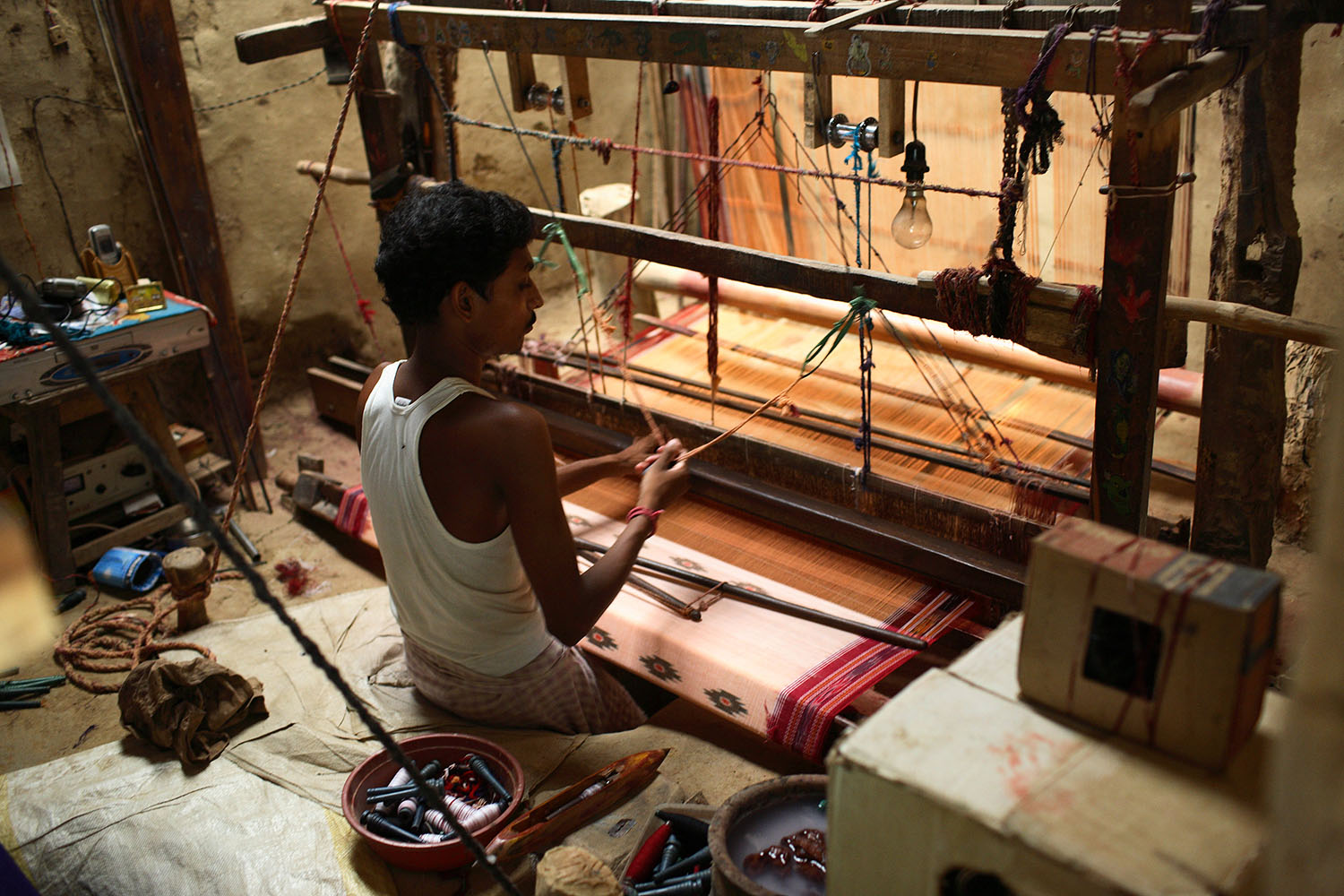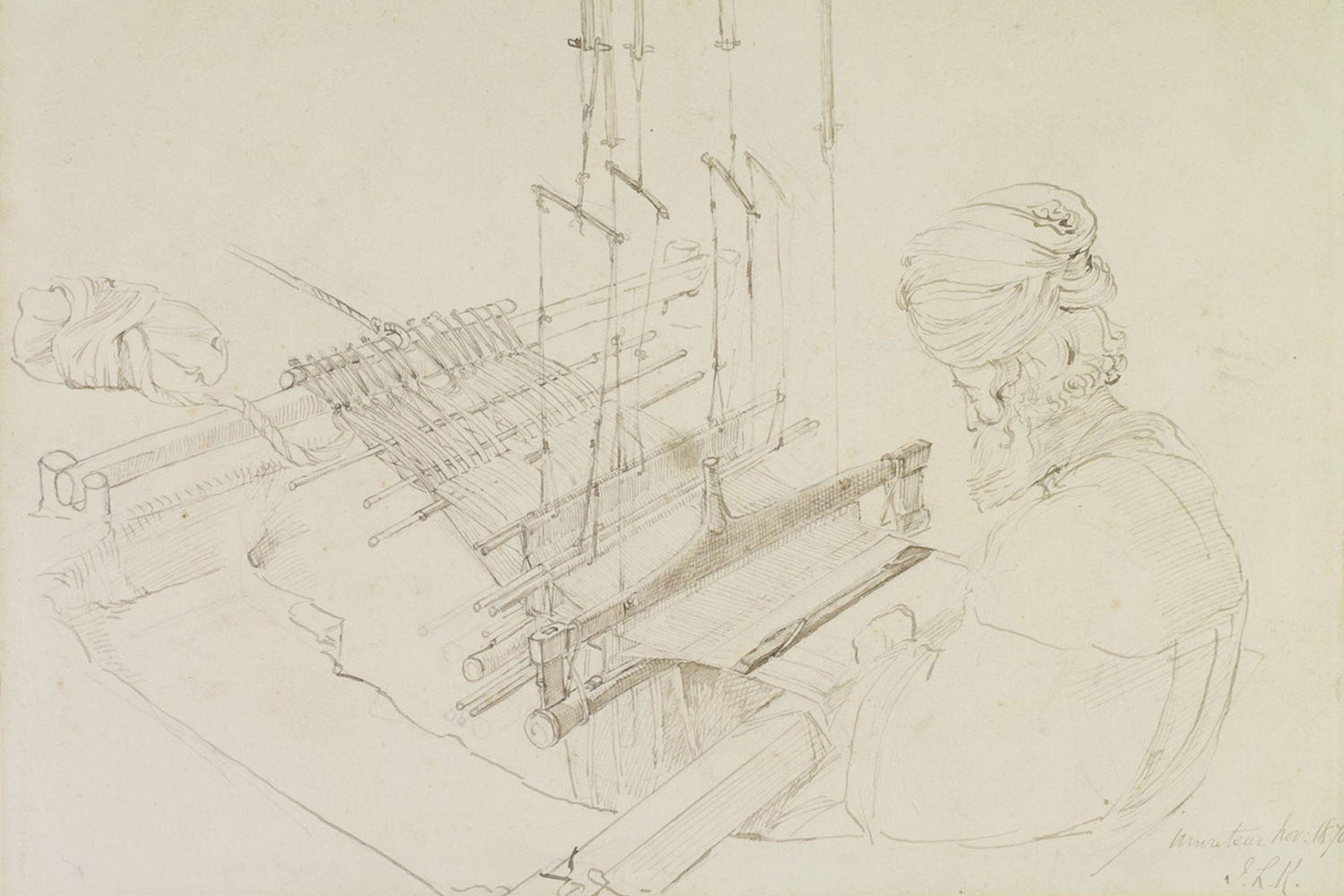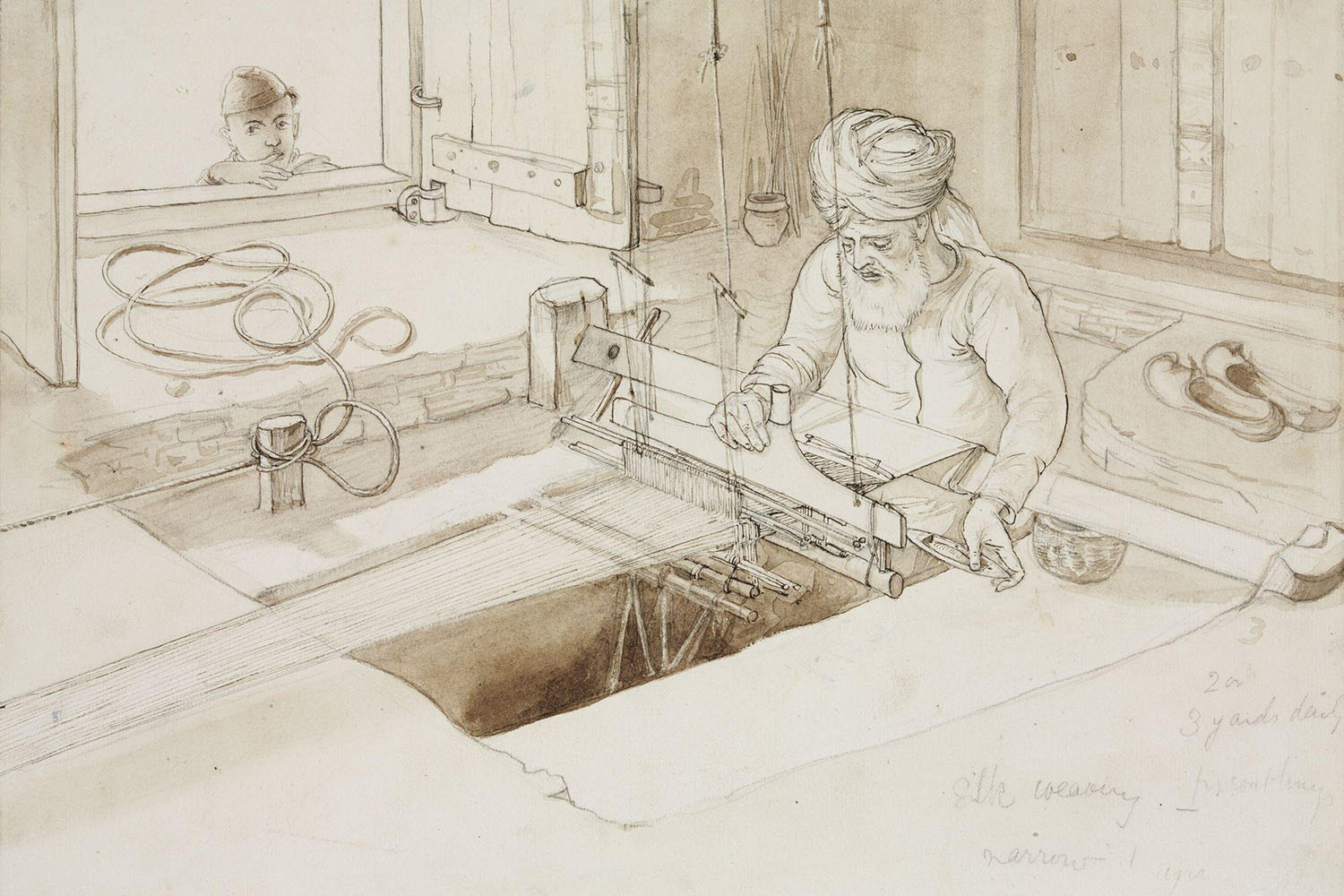ARTICLE
Pit Loom
One of the earliest types of horizontal looms, the manually operated pit loom gets its name from the pit over which the loom is set. The four posts of the horizontal loom are sunken into the ground, allowing the treadles to be located inside the pit, which the weaver operates using their feet.
The pit loom is considered to be an upgrade on the handloom and the backstrap loom for several reasons, due to which it also has comparatively higher production rates. Owing to its proximity to the ground, a pit loom is more stable than a handloom. Also, unlike the horizontal ground loom – where the warp is stretched between two beams, requiring the weaver to lean over the yarn as the weaving progresses – the warp is level with the weaver, making the weaving process less physically strenuous. Since the warp can be controlled by foot using the treadles, this leaves the weavers hands free, allowing them to pass the weft through the warp using a shuttle.
Some of the textiles produced using pit looms include ghongadi blankets, dhurries, kosa silk, thangaliya textiles and ilkal sarees among others. They are also commonly used to weave thin as well as bulky carpets and rugs, including reversible ones. A fabric that is commonly associated with the pit loom is khadi, whose name originally comes from khad, the Hindi and Punjabi word for pit.
There are two types of pit looms: throw shuttle pit looms and fly shuttle pit looms.
Bibliography
Our website is currently undergoing maintenance and re-design, due to which we have had to take down some of our bibliographies. While these will be re-published shortly, you can request references for specific articles by writing to hellomapacademy@map-india.org.









